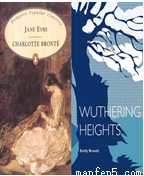题目内容
Lita CabEllut is one of Spain’s most successful artists, “My _________ was like that of thousands of street kids around the world.” says Lita. She used to _________ the streets of Barcelona with other homeless children and _______ in the open air.
Lita was _______ in a village in Aragon, north-east Spain, in 1961.While she was a baby, her mother _______Barcelona. She was left with her grandmother—but _________she spent most of her time out on the_________.
_______, she says that “art was there because art is _________ around us”, but she didn’t think about it in a __________ sense—she was focused on __________.
Lita’s grandmother ____________when she was about 10 years old and she ____________ a Barcelona orphanage(孤儿院)before being ____________ by “a beautiful Catalan family” two years later.
She didn’t____________ much about them, except that they __________her to art. They took her to Madrid’s Prado museum, and showed Goya’s works to her. Her adopted family __________Lita to keep painting—they ____________paid for private teachers to make up for __________time. She slowly made progress at school, started to listen to the “voice of art” and ____________to study hard.
1.A. hobby B. skill C. dream D. childhood
2.A. move B. wander C. leave D. cross
3.A. drank B. sang C. slept D. danced
4.A. born B. cured C. invited D. admired
5.A. moved to B. stayed in C. passed by D. backed off
6.A. in favor B. in danger C. in person D. in reality
7.A. beds B. streets C. tables D. grasses
8.A. Knowing B. Training C. Remembering D. Forgetting
9.A. badly B. finally C. never D. always
10.A. sad B. bad C. formal D. humorous
11.A. arrival B. survival C. eagerness D. patience
12.A. died B. bit C. ran D. played
13.A. kept pace with B. ended up in C. took charge of D. got hold of
14.A. adopted B. matched C. shown D. recognized
15.A. finish B. admit C. mind D. tell
16.A. attached B. contributed C. introduced D. added
17.A. discouraged B. taught C. encouraged D. shocked
18.A. yet B. just C. still D. even
19.A. closing B. lost C. available D. spare
20.A. decided B. pretended C. preferred D. abandoned
 高效智能课时作业系列答案
高效智能课时作业系列答案 捷径训练检测卷系列答案
捷径训练检测卷系列答案 小夫子全能检测系列答案
小夫子全能检测系列答案


